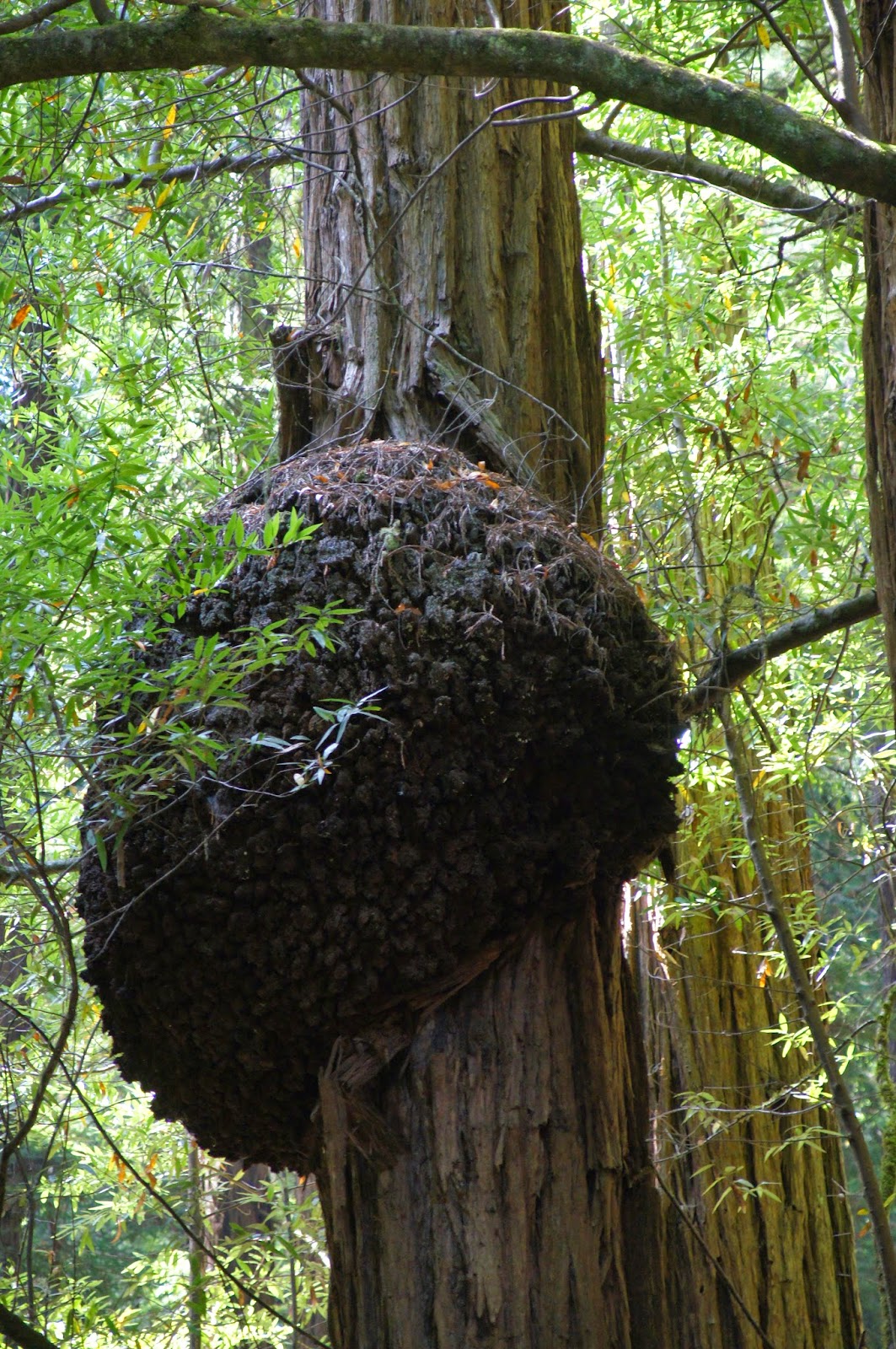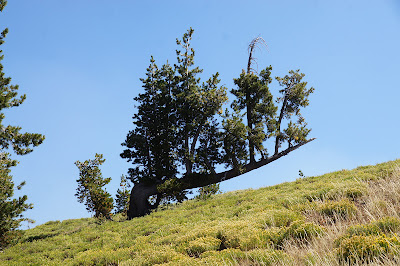Place: Muir Woods National Monument, 20 minutes drive North of San Francisco, California
Difficulty level: very easy (lower trail is stroller-friendly).
Whenever we have visitors from out of state we take them to see 'the big trees'. For us it is always the choice between visiting Henry Cowell Redwood State Park or Muir Woods National Monument. Both of these places are home for groves of impressive redwood giants and our choice often depends on which traffic jam we are willing to tolerate going there :-/
This time we went to Muir Woods, Papa quail's cousin, spouse and baby, and me.
Although a mid-week morning, there were quite a few people there already, enough that we needed to park at the once-removed lot. Tour buses were coming in every minute and groups of people poured through the gate, briefly stopping to pose for a photograph under the sign.
 |
| The welcoming tree - redwood by the gate. |


There are pretty sights even before entering the gate. The running brook banks covered with lush ferns and a grove of young redwoods, still slim, right behind the restrooms building at the parking lot.
California holds the record for the largest tree (Giant Sequoia), the oldest tree (Bristlecone pine) and also that of the tallest tree
(the record is 379 ft) - the Coastal Redwood (Sequoia sempervitens). Although not record-holding for oldest, the Coastal Redwood can be very long-lived still. This log on display in Muir Woods was nearly 2000 years old at its death.

Coastal redwoods grow naturally along the Pacific coast from Santa Cruz, CA in the south to Curry county, Oregon in the north. They like the foggy weather and need the ocean mist to thrive.
 |
| A grove of young redwoods on the hillside. |
 |
| Redwood tops |
 |
| Redwood bottom |
At the end of summer, the creek had little water in it. We saw a little fish swimming there nonetheless :-)
 |
| The creek runs through it |
A fern by the creek:

We saw tree roots exposed by the trail, shiny from the multitudes who touched them while walked by. The first part of the trail is made of board walk and has clear signs requesting not to step off the trail - redwood roots are shallow and delicate, and the steps of so many people can damage them and shorten the lives of these trees. Trees to topple over during storms and mud slides. One can truly appreciate the redwood size when its trunk lies on the ground.
 |
| A fallen redwood |
 |
| A natural bridge |
Many of these giants have a hole at their base. Some of these are large enough to walk inside.
 |
| 'and he lived under the name of Sanders' |
 |
| Little Redwoods at the base of a large one. They're genetically identical. |
We took our time strolling underneath the trees, Normally, we would climb the hillside trail to go back to the visitor center, but that trail isn't stroller friendly so we turned back on the boardwalk on the other side of the creek. We had an interesting encounter with an elderly tourist who didn't speak a single word in English, who was fascinated with our cousin's baby and photographed him with much enthusiasm, People can sometimes be a curiosity just as much as nature, I guess.
The trail is about 1.5 mile long and the entire walk, including some baby care stops, took us about two hours. If you ask me, I could have stayed there the entire day and not get tired of these magnificent trees!
 |
| Dwarfed by the giants |













































